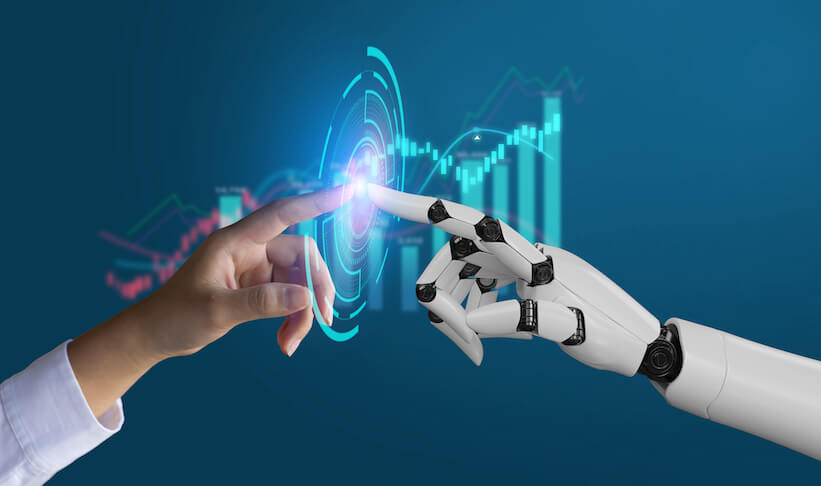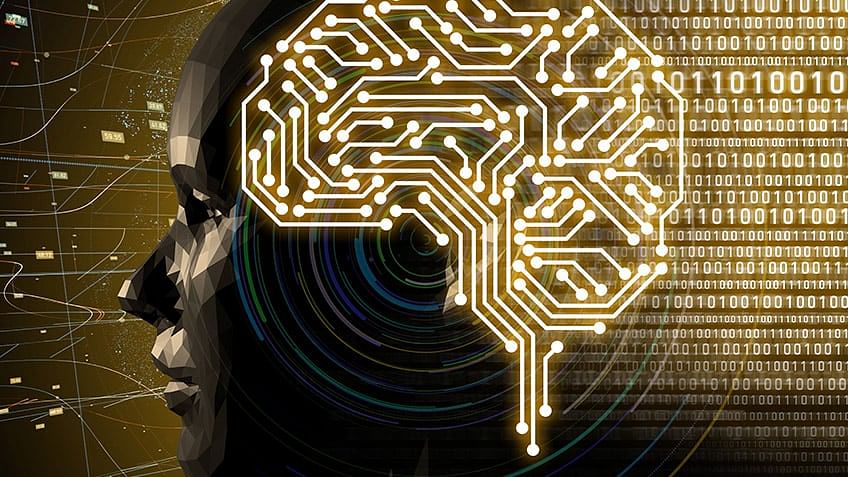 What is Generative AI?
What is Generative AI?The branch of artificial intelligence known as "generative AI" is concerned with developing models and algorithms that may generate fresh and unique content. Generative AI algorithms apply probabilistic approaches to produce new instances that mirror the original data, typically with the capacity to demonstrate creative and inventive behavior beyond what was explicitly designed.
How Does Generative AI Tool Work?Generative AI tools operate by employing advanced machine learning techniques, often deep learning models such as generative adversarial networks (GANs) or variational autoencoders (VAEs). These models are trained on massive datasets to understand patterns and underlying structures. The models learn to create new instances that mirror the training data by capturing the statistical distribution of the input data throughout the training phase.
Best Generative AI ToolsHere is an overview of key features, pros and cons, working and pricing of the top 20 generative AI tools:
Top Generative AI Tools: Boost Your Creativity
Lesson 15 of 23By Sneha Kothari
Last updated on Dec 11, 202369786
Top 20 Generative AI Tool
PreviousNext
Table of Contents
What is Generative AI?How Does Generative AI Tool Work?Best Generative AI ToolsHow Can Businesses Use Generative AI Tools?Go In For Caltech Post Graduate Program in AI and Machine LearningView More
With numerous Generative AI tools in the market today, are you intrigued to know about the best generative AI tools that have revolutionized the industry and are influencing future creativity and innovation?
Let's explore the special attributes, working, and advantages of the top 20 tools.
What is Generative AI?
The branch of artificial intelligence known as "generative AI" is concerned with developing models and algorithms that may generate fresh and unique content. Generative AI algorithms apply probabilistic approaches to produce new instances that mirror the original data, typically with the capacity to demonstrate creative and inventive behavior beyond what was explicitly designed.
How Does Generative AI Tool Work?
Generative AI tools operate by employing advanced machine learning techniques, often deep learning models such as generative adversarial networks (GANs) or variational autoencoders (VAEs). These models are trained on massive datasets to understand patterns and underlying structures. The models learn to create new instances that mirror the training data by capturing the statistical distribution of the input data throughout the training phase.
Your AI/ML Career is Just Around The Corner!
AI Engineer Master's ProgramEXPLORE PROGRAMYour AI/ML Career is Just Around The Corner!
Best Generative AI Tools
Here is an overview of key features, pros and cons, working and pricing of the top 20 generative AI tools:
1. GPT-4GPT-4 is the most recent version of OpenAI's Large Language Model (LLM), developed after GPT-3 and GPT-3.5. GPT-4 has been marketed as being more inventive and accurate while also being safer and more stable than earlier generations.
Key Features
GPT-4 has 100 Trillion Parameters
Improved Factual Performance
Enhanced Steerability
Image Inputs Capability
Multilingual Capability
Outperformance on Multiple Benchmarks
Human-Level Performance on Various Benchmarks
Pros
It is a consistent and reliable time saver.
Cost-effective and scalar
Cons
It can provide wrong answers.
It can be extremely biased.
Pricing
Free Version
Prompt: $0.03 per 1,000 tokens
Completion: $0.06 per 1,000 tokens
Paid membership: $20/month
2. ChatGPTThe most commonly used tool from OpenAI to date is ChatGPT, which offers common users free access to basic AI content development. It has also announced its experimental premium subscription, ChatGPT Plus, for users who need additional processing power, and early access to new features.
Key Features
Natural Language Understanding
Conversational Context
Open-Domain Conversations
Language Fluency
Answering Questions
Creative Writing
Language Translation
Text Completion and Suggestion
Personalized Interactions
Pros
Provide more natural interactions and accurate responses.
Free tool for the general public.
Cons
Prone to errors and misuse.
The tool cannot access data or current events after September 2021.
Pricing
Free Tool
Paid membership: Starts at $0.002 for 1K prompt tokens.
3. AlphaCodeThe transformer-based language model is more complex than many existing language models, like OpenAI Codex, with 41.4 billion parameters. AlphaCode provides training in a number of programming languages, including C#, Ruby, Scala, Java, JavaScript, PHP, Go, and Rust. It excels in Python and C++.
Key Features
Smart filtering after large-scale code generation.
Transformer-based language model.
Datasets and solutions are available on GitHub.
Programming capabilities in Python, C++, and several other languages.
Access to approximately 13,000 example tasks for training.
Pros
Generates code at an unprecedented scale.
It does efficient critical thinking informed by experience.
Cons
User-dependent learning
Can go wrong
Pricing
Free Tool
4. GitHub CopilotGitHub Copilot, in partnership with GitHub and OpenAI, created Copilot, a code completion Artificial Intelligence tool.
Key Features
Intelligent Code Suggestions
Support for Multiple Programming Languages
Learning from Open Source Code
Autocompletion for Documentation and Comments
Integration with Integrated Development Environments (IDEs)
Rapid Prototyping and Exploration
Context-Aware Suggestions
Collaborative Coding
Customization and Adaptation
Continuous Learning and Improvement
Pros
It improves developers' productivity and efficiency.
It supports various programming languages.
Cons
Code Quality and Security may vary.
Over-Reliance on Autocomplete
Pricing
Monthly: $10/month
Annually: $100
5. BardBard is a chatbot and content generation tool developed by Google. It uses LaMDA, a transformer-based model, and is seen as Google's counterpart to ChatGPT. Currently in the experimental phase, Bard is accessible to a limited user base in the US and UK.
Key Features
Built on LaMDA, a transformer-based model.
A waitlist is currently offered to a small number of US and UK customers.
A rating system for user responses.
Available through individual Google accounts.
Capable of assisting with tasks related to software development and programming.
Pros
Ethical and Transparent AI development approach
Pre-tested by numerous testers
Cons
No conversation history features like ChatGPT.
Unable to access through a Google account.
Pricing
Free Tool (limited to users belonging to specific criteria)
6. Cohere GenerateCohere is an AI company that helps businesses improve their operations by harnessing the power of AI. Cohere Generate delivers custom content for emails, landing pages, product descriptions, and other needs.
Key Features
Copy content generation focused on marketing and sales.
A rate-limited use is available for free.
Creates Ad and blog copy.
Writes Product description.
Works well with public, private, and hybrid cloud environments.
Pros
Easy to navigate while contacting a client.
Gives a good insight into user behavior, assisting them seamlessly.
Cons
Sessions often get stuck.
A few bugs, such as difficulty in answering calls.
Pricing
For learning and prototyping: Free
For Production:
Default: $0.4 / 1M Tokens
Custom: $0.8 / 1M Tokens
7. ClaudeClaude is a cutting-edge AI assistant developed by Anthropic. Research has focused on training AI systems to be helpful, fair, and safe, which is exactly what Claude embodies.
Key Features
Process huge amounts of text
Does natural conversations
Can speak various common languages and programming languages.
Automate workflows
Pros
Higher user engagement and feedback.
Detailed and easily understood answers.
Cons
High difficulty level
Incorrectly answers factual queries.
Pricing
Claude Instant
Prompt: $1.63/ million tokens
Completion: $5.51/ million tokens
Claude-v1
Prompt: $11.02/ million tokens
Completion: $32.68/ million tokens
8. SynthesiaThis is a great AI video platform or tool for creating videos. With little to no work, it rapidly generates and broadcasts videos of professional quality.
Key Features
Content Management
Personalized Onboarding
Text Analysis
Single Sign On
Enterprise-level scalability
Text Editing
SOC 2 and GDPR compliant
Pros
High-quality avatars and a variety of facial and vocal expressions.
Ability to generate lifelike videos
Cons
Very less customization options and lack of advanced features.
Limited range of gestures for AI avatars.
Pricing
Personal
₹1499.92/month, ₹17,999.00 billed annually, or pay monthly
$30 per month, billed monthly
Enterprise: price based on the number of seats
9. DALL-E 2Among the best generative AI tools for images, DALL-E 2 is OpenAI’s recent version for image and art generation.
DALL-E 2 generates better and more photorealistic images when compared to DALL-E. DALL-E 2 appropriately goes by user requests. DALL-E 2 has received more instruction on how to reject improper inputs to prevent inappropriate outputs.
Key Features
Phased deployment based on learning.
Natural language inputs for producing images and art outputs.
An original image can have several different iterations.
Users can enhance existing pictures using the inpainting tool.
Requesting modifications or edits for an image is done by the inpainting feature.
DALL-E API is made for developers.
Pros
Preferred for Photorealism
Prevents harmful generations
Cons
High priced
Less creative than humans.
Pricing
115 credits for $15 USD
10. StyleGANStyleGAN is also a good option when generative AI tools for images are discussed. It uses deep learning algorithms to generate realistic and high-quality images. It significantly assists startups in varied manners due to its ability to create visually attractive images.
Key Features
Synthesizes artificial pictures obscure from authentic photographs.
Uses GAN application to produce artificial face pictures.
It learns from a dataset of notable faces.
Uses standalone mapping channels and noise layers as references of randomness to produce an artificial image.
It can be used to analyze non-image and image datasets.
Produces simulated images sequentially.
Pros
Used to create virtual try-on experiences in fashion design industries.
Used to create lifelike characters and immersive environments by gaming industries.
Cons
Hurdles in regulating image output.
High priced
Pricing
Free Version
11. BardeenIt is an AI automation tool that enhances your productivity and saves time. Bardeen has OpenAI automation for your creative needs; it can suggest and write online social media content or buff up an email for its users.
Key Features
Operates in your browser by workflow automation.
Creates personalized outreach messages.
Learns continuously to improve its functionality
Has a pre-built workflow or template called a playbook that is customizable and automates a specific task.
MagicBox feature is like an AI-enabled search box where users describe automation.
Pros
Improves online content
Cost-effective and privacy-friendly
Cons
It can give over informative content.
The summary of long articles is vague at times.
Pricing
Starter: Free
Professional: $10/month
12. Copy.aiCopy.ai is one of the best artificial intelligence (AI) writing tools. It can easily differentiate between content intent, for example, marketing copy, slogans, punchy headlines, etc.
Key Features
Closed Captioning Services
Localization Services
Interpretation.
Multilingual Desktop Publishing
Translation
Transcription Services
Faster blog writing with the “First Draft Wizard” feature
Higher converting posts for social media
Personalized email creation
Pros
Efficient for social media managers
Engaging email creation
Cons
It lags at times while generating content.
Proper fact-checking is required.
Pricing
Free plan till 2000 words
Monthly plan: $49/month for unlimited words.
13. Rephrase.aiRephrase.ai is an AI-generative tool that can produce videos just like Synthesia. Additionally, it has the capability to use digital avatars of real people in the videos.
Key Features
Leverage personalized communication
Video shoot for digital avatar creation.
Integration of digital avatars with different channels such as API access, App notification, WhatsApp for Business bot, Email, QR code, and Microsite.
Impact Management
Pros
Increased Business Engagement
Reduced customer acquisition costs
Cons
No free trial
Premium Consulting or Integration Services
Pricing
Personal: $25/month
Enterprise: Customized Plan
14DescriptIt is a cloud-based collaborative audio or video editor by a company named Descript in San Francisco. The tool works like a doc. It has functions including AI, publishing, full multitrack editing, transcription, and screen recording.
Key Features
Making editable podcast transcripts
Writing webinar scripts
Collaborating on scripts
Screen recording
Social clips and templates
Publishing
Overdub
Studio Sound
Subtitles and captions
Filler word removal
Pros
Provides Video Captions
Generous free tier
Cons
No tutorial provided
Lack of multiple recordings of a single composition
Pricing
Free: $0
Creator: $12/user/month. $144 billed annually
Pro: $24/user/month. $288 billed annually.
Enterprise: Custom
15. Type StudioType Studio is an online text-based video editor that lives in a browser. Users upload videos in Type Studio, and it does the heavy lifting, including transcribing spoken words into text, so there is no need to edit videos with a timeline.
Key Features
Transcription Software
Browses video content
Automatically generated subtitles and closed captions.
Video Editing
Stores footage online
Cloud video rendering
Content Management Systems (CMS)
Translation
Pros
Easily add subtitles to edited videos.
Text is transcribed with just one click.
Cons
High-priced
Lack of precision
Pricing
Free plan: 1GB of cloud storage space.
Paid plans: From $12 to $36 per month
Top Generative AI Tools: Boost Your Creativity
Lesson 15 of 23By Sneha Kothari
Last updated on Dec 11, 202369786
Top 20 Generative AI Tool
PreviousNext
Table of Contents
What is Generative AI?How Does Generative AI Tool Work?Best Generative AI ToolsHow Can Businesses Use Generative AI Tools?Go In For Caltech Post Graduate Program in AI and Machine LearningView More
With numerous Generative AI tools in the market today, are you intrigued to know about the best generative AI tools that have revolutionized the industry and are influencing future creativity and innovation?
Let's explore the special attributes, working, and advantages of the top 20 tools.
What is Generative AI?
The branch of artificial intelligence known as "generative AI" is concerned with developing models and algorithms that may generate fresh and unique content. Generative AI algorithms apply probabilistic approaches to produce new instances that mirror the original data, typically with the capacity to demonstrate creative and inventive behavior beyond what was explicitly designed.
How Does Generative AI Tool Work?
Generative AI tools operate by employing advanced machine learning techniques, often deep learning models such as generative adversarial networks (GANs) or variational autoencoders (VAEs). These models are trained on massive datasets to understand patterns and underlying structures. The models learn to create new instances that mirror the training data by capturing the statistical distribution of the input data throughout the training phase.
Your AI/ML Career is Just Around The Corner!
AI Engineer Master's ProgramEXPLORE PROGRAMYour AI/ML Career is Just Around The Corner!
Best Generative AI Tools
Here is an overview of key features, pros and cons, working and pricing of the top 20 generative AI tools:
1. GPT-4
GPT-4 is the most recent version of OpenAI's Large Language Model (LLM), developed after GPT-3 and GPT-3.5. GPT-4 has been marketed as being more inventive and accurate while also being safer and more stable than earlier generations.
Key Features
GPT-4 has 100 Trillion Parameters
Improved Factual Performance
Enhanced Steerability
Image Inputs Capability
Multilingual Capability
Outperformance on Multiple Benchmarks
Human-Level Performance on Various Benchmarks
Pros
It is a consistent and reliable time saver.
Cost-effective and scalar
Cons
It can provide wrong answers.
It can be extremely biased.
Pricing
Free Version
Prompt: $0.03 per 1,000 tokens
Completion: $0.06 per 1,000 tokens
Paid membership: $20/month
2. ChatGPT
The most commonly used tool from OpenAI to date is ChatGPT, which offers common users free access to basic AI content development. It has also announced its experimental premium subscription, ChatGPT Plus, for users who need additional processing power, and early access to new features.
Key Features
Natural Language Understanding
Conversational Context
Open-Domain Conversations
Language Fluency
Answering Questions
Creative Writing
Language Translation
Text Completion and Suggestion
Personalized Interactions
Pros
Provide more natural interactions and accurate responses.
Free tool for the general public.
Cons
Prone to errors and misuse.
The tool cannot access data or current events after September 2021.
Pricing
Free Tool
Paid membership: Starts at $0.002 for 1K prompt tokens.
3. AlphaCode
The transformer-based language model is more complex than many existing language models, like OpenAI Codex, with 41.4 billion parameters. AlphaCode provides training in a number of programming languages, including C#, Ruby, Scala, Java, JavaScript, PHP, Go, and Rust. It excels in Python and C++.
Key Features
Smart filtering after large-scale code generation.
Transformer-based language model.
Datasets and solutions are available on GitHub.
Programming capabilities in Python, C++, and several other languages.
Access to approximately 13,000 example tasks for training.
Pros
Generates code at an unprecedented scale.
It does efficient critical thinking informed by experience.
Cons
User-dependent learning
Can go wrong
Pricing
Free Tool
Your AI/ML Career is Just Around The Corner!
AI Engineer Master's ProgramEXPLORE PROGRAMYour AI/ML Career is Just Around The Corner!
4. GitHub Copilot
GitHub Copilot, in partnership with GitHub and OpenAI, created Copilot, a code completion Artificial Intelligence tool.
Key Features
Intelligent Code Suggestions
Support for Multiple Programming Languages
Learning from Open Source Code
Autocompletion for Documentation and Comments
Integration with Integrated Development Environments (IDEs)
Rapid Prototyping and Exploration
Context-Aware Suggestions
Collaborative Coding
Customization and Adaptation
Continuous Learning and Improvement
Pros
It improves developers' productivity and efficiency.
It supports various programming languages.
Cons
Code Quality and Security may vary.
Over-Reliance on Autocomplete
Pricing
Monthly: $10/month
Annually: $100
5. Bard
Bard is a chatbot and content generation tool developed by Google. It uses LaMDA, a transformer-based model, and is seen as Google's counterpart to ChatGPT. Currently in the experimental phase, Bard is accessible to a limited user base in the US and UK.
Key Features
Built on LaMDA, a transformer-based model.
A waitlist is currently offered to a small number of US and UK customers.
A rating system for user responses.
Available through individual Google accounts.
Capable of assisting with tasks related to software development and programming.
Pros
Ethical and Transparent AI development approach
Pre-tested by numerous testers
Cons
No conversation history features like ChatGPT.
Unable to access through a Google account.
Pricing
Free Tool (limited to users belonging to specific criteria)
6. Cohere Generate
Cohere is an AI company that helps businesses improve their operations by harnessing the power of AI. Cohere Generate delivers custom content for emails, landing pages, product descriptions, and other needs.
Key Features
Copy content generation focused on marketing and sales.
A rate-limited use is available for free.
Creates Ad and blog copy.
Writes Product description.
Works well with public, private, and hybrid cloud environments.
Pros
Easy to navigate while contacting a client.
Gives a good insight into user behavior, assisting them seamlessly.
Cons
Sessions often get stuck.
A few bugs, such as difficulty in answering calls.
Pricing
For learning and prototyping: Free
For Production:
Default: $0.4 / 1M Tokens
Custom: $0.8 / 1M Tokens
Your AI/ML Career is Just Around The Corner!
AI Engineer Master's ProgramEXPLORE PROGRAMYour AI/ML Career is Just Around The Corner!
7. Claude
Claude is a cutting-edge AI assistant developed by Anthropic. Research has focused on training AI systems to be helpful, fair, and safe, which is exactly what Claude embodies.
Key Features
Process huge amounts of text
Does natural conversations
Can speak various common languages and programming languages.
Automate workflows
Pros
Higher user engagement and feedback.
Detailed and easily understood answers.
Cons
High difficulty level
Incorrectly answers factual queries.
Pricing
Claude Instant
Prompt: $1.63/ million tokens
Completion: $5.51/ million tokens
Claude-v1
Prompt: $11.02/ million tokens
Completion: $32.68/ million tokens
8. Synthesia
This is a great AI video platform or tool for creating videos. With little to no work, it rapidly generates and broadcasts videos of professional quality.
Key Features
Content Management
Personalized Onboarding
Text Analysis
Single Sign On
Enterprise-level scalability
Text Editing
SOC 2 and GDPR compliant
Pros
High-quality avatars and a variety of facial and vocal expressions.
Ability to generate lifelike videos
Cons
Very less customization options and lack of advanced features.
Limited range of gestures for AI avatars.
Pricing
Personal
₹1499.92/month, ₹17,999.00 billed annually, or pay monthly
$30 per month, billed monthly
Enterprise: price based on the number of seats
9. DALL-E 2
Among the best generative AI tools for images, DALL-E 2 is OpenAI’s recent version for image and art generation.
DALL-E 2 generates better and more photorealistic images when compared to DALL-E. DALL-E 2 appropriately goes by user requests. DALL-E 2 has received more instruction on how to reject improper inputs to prevent inappropriate outputs.
Key Features
Phased deployment based on learning.
Natural language inputs for producing images and art outputs.
An original image can have several different iterations.
Users can enhance existing pictures using the inpainting tool.
Requesting modifications or edits for an image is done by the inpainting feature.
DALL-E API is made for developers.
Pros
Preferred for Photorealism
Prevents harmful generations
Cons
High priced
Less creative than humans.
Pricing
115 credits for $15 USD
10. StyleGAN
StyleGAN is also a good option when generative AI tools for images are discussed. It uses deep learning algorithms to generate realistic and high-quality images. It significantly assists startups in varied manners due to its ability to create visually attractive images.
Key Features
Synthesizes artificial pictures obscure from authentic photographs.
Uses GAN application to produce artificial face pictures.
It learns from a dataset of notable faces.
Uses standalone mapping channels and noise layers as references of randomness to produce an artificial image.
It can be used to analyze non-image and image datasets.
Produces simulated images sequentially.
Pros
Used to create virtual try-on experiences in fashion design industries.
Used to create lifelike characters and immersive environments by gaming industries.
Cons
Hurdles in regulating image output.
High priced
Pricing
Free Version
11. Bardeen
It is an AI automation tool that enhances your productivity and saves time. Bardeen has OpenAI automation for your creative needs; it can suggest and write online social media content or buff up an email for its users.
Key Features
Operates in your browser by workflow automation.
Creates personalized outreach messages.
Learns continuously to improve its functionality
Has a pre-built workflow or template called a playbook that is customizable and automates a specific task.
MagicBox feature is like an AI-enabled search box where users describe automation.
Pros
Improves online content
Cost-effective and privacy-friendly
Cons
It can give over informative content.
The summary of long articles is vague at times.
Pricing
Starter: Free
Professional: $10/month
Your AI/ML Career is Just Around The Corner!
AI Engineer Master's ProgramEXPLORE PROGRAMYour AI/ML Career is Just Around The Corner!
12. Copy.ai
Copy.ai is one of the best artificial intelligence (AI) writing tools. It can easily differentiate between content intent, for example, marketing copy, slogans, punchy headlines, etc.
Key Features
Closed Captioning Services
Localization Services
Interpretation.
Multilingual Desktop Publishing
Translation
Transcription Services
Faster blog writing with the “First Draft Wizard” feature
Higher converting posts for social media
Personalized email creation
Pros
Efficient for social media managers
Engaging email creation
Cons
It lags at times while generating content.
Proper fact-checking is required.
Pricing
Free plan till 2000 words
Monthly plan: $49/month for unlimited words.
13. Rephrase.ai
Rephrase.ai is an AI-generative tool that can produce videos just like Synthesia. Additionally, it has the capability to use digital avatars of real people in the videos.
Key Features
Leverage personalized communication
Video shoot for digital avatar creation.
Integration of digital avatars with different channels such as API access, App notification, WhatsApp for Business bot, Email, QR code, and Microsite.
Impact Management
Pros
Increased Business Engagement
Reduced customer acquisition costs
Cons
No free trial
Premium Consulting or Integration Services
Pricing
Personal: $25/month
Enterprise: Customized Plan
14Descript
It is a cloud-based collaborative audio or video editor by a company named Descript in San Francisco. The tool works like a doc. It has functions including AI, publishing, full multitrack editing, transcription, and screen recording.
Key Features
Making editable podcast transcripts
Writing webinar scripts
Collaborating on scripts
Screen recording
Social clips and templates
Publishing
Overdub
Studio Sound
Subtitles and captions
Filler word removal
Pros
Provides Video Captions
Generous free tier
Cons
No tutorial provided
Lack of multiple recordings of a single composition
Pricing
Free: $0
Creator: $12/user/month. $144 billed annually
Pro: $24/user/month. $288 billed annually.
Enterprise: Custom
15. Type Studio
Type Studio is an online text-based video editor that lives in a browser. Users upload videos in Type Studio, and it does the heavy lifting, including transcribing spoken words into text, so there is no need to edit videos with a timeline.
Key Features
Transcription Software
Browses video content
Automatically generated subtitles and closed captions.
Video Editing
Stores footage online
Cloud video rendering
Content Management Systems (CMS)
Translation
Pros
Easily add subtitles to edited videos.
Text is transcribed with just one click.
Cons
High-priced
Lack of precision
Pricing
Free plan: 1GB of cloud storage space.
Paid plans: From $12 to $36 per month
Your AI/ML Career is Just Around The Corner!
AI Engineer Master's ProgramEXPLORE PROGRAMYour AI/ML Career is Just Around The Corner!
16. Murf.ai
Murf.ai is an online tool that uses AI to generate high-quality voice-overs for videos, presentations, and text-to-speech needs. This tool allows users to modify a script or transform a casual voice recording into a professional-sounding studio-quality voice-over.
Key Features
Voice Recognition
Text to Speech
Customization Features
High-quality Voices
Pros
More than 100 human-sounding voices
User-friendly Interface
Cons
Inaccurate Pronunciation
Limited Features and Settings
Pricing
Free Trial
Basic: $29.00, 1 User/Month
Pro: $39.00, 1 User/Month
Enterprise: $99.00, 1/Per Month
17. Designs.ai
Designs.ai is a comprehensive AI design tool that can handle various content development tasks. It's goal is to "empower imagination through artificial intelligence." It can produce voice-overs, videos, social media postings, and logos.
Key Features
Logo maker
Video maker
AI writer
Speech maker
Design maker
Graphic painter
Color matcher
Font Painter
Calendar
Pros
Improved Efficiency
Boosted Creativity
Cons
Insufficient control over projects
High-priced
Pricing
Basic: $29/month
Pro: $69/month
Enterprise: Customized
18. Soundraw
Soundraw is a music generator powered by AI that lets you create your own unique and royalty-free music. You can use this music to enhance your projects or content.
Key Features
Customizes the songs
API for businesses
Creates unlimited music
Audio content for Podcasts, Radio programs & ads, Guided Meditations, Audiobooks, and Music streaming.
Video content for Youtube & Social Media, TV, Movies, Web ads, Corporate videos, and Live broadcasting.
Content for games
Pros
No copyright strikes
Permanent license for all creatives
Cons
Lack of creativity in musical depth
Limited themes and moods
Pricing
Free: $US0
Personal plan: $US16.99/month, Billed annually
19. ChatFlash
ChatFlash is an AI generative tool that helps us to create content through a chat option.
Key Features
SEO optimization
Prompt templates
Image generation
On-brand content
Personal Onboarding and webinar
Plagiarism check
Pros
Efficient content-assistant
Expert content creation for true professionals
Cons
Limited templates and personalities
Less prompt
Pricing
Standard: € 30/ month
Pro: € 80 / month
Enterprise: € 400 / month
20. ChatSonic
The conversational AI chatbot, a ground-breaking AI like Chat GPT - Chatsonic (now with GPT-4 capabilities), overcomes the shortcomings of ChatGPT and ends up being the finest free Chat GPT substitute.
Key Features
AI article and blog writer
Paraphrasing
Text expanding
Article summarizer
Product Description
Facebook and Google Ads
Surfer integration
Landing pages
AI article ideas
Text generation
Image creation
Translation
Pros
Random question and answer
Efficient voice command and translation.
Cons
Has a short word limit
Issues with images and lack of knowledge.
Pricing
Free Trial: $0/month
Pro: $12.67/month
Enterprise: Starts at $1000/month
How Can Businesses Use Generative AI Tools?The use of generative AI tools has become increasingly prevalent in the business world, as it enables organizations to optimize their operations, boost their creative output, and gain an edge over their competitors in today's rapidly evolving market landscape. Businesses can implement generative AI technologies in a variety of ways. They might apply them to-
Create realistic product prototypes
Generate personalized content for customers
Design compelling marketing materials
Enhance data analysis and decision-making processes
Develop new and innovative products or services
Automate repetitive tasks
Streamline operations
Gain a competitive edge in the market
Enhance creativity
Go In For Caltech Post Graduate Program in AI and Machine LearningIf you are intrigued after gaining a general idea about all the best Generative AI tools examples, you may move further with a course program on the same by a renowned platform. The Caltech Post Graduate Program in AI and Machine Learning course, provided by Simplilearn, is a thorough and esteemed program that gives students the information and abilities they need to succeed in the field of artificial intelligence.
This program offers a thorough grasp of AI concepts, machine learning algorithms, and real-world applications as the curriculum is chosen by industry professionals and taught through a flexible online platform. By enrolling in this program, people may progress in their careers, take advantage of enticing possibilities across many sectors, and contribute to cutting-edge developments in AI and machine learning.
Source: simplilearn
Original Content:
https://shorturl.at/cyW39







































